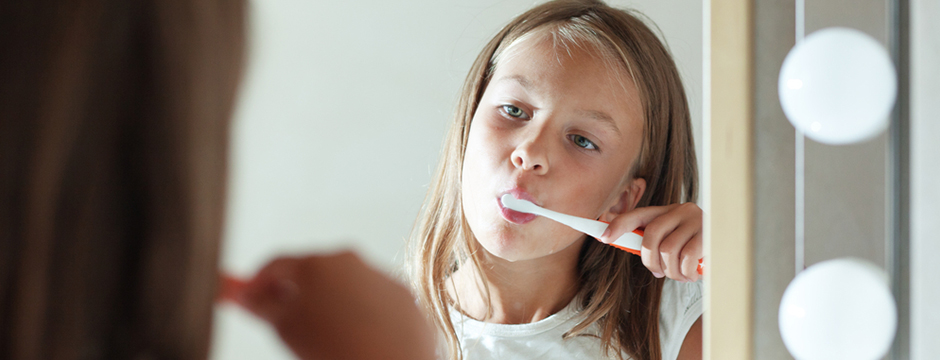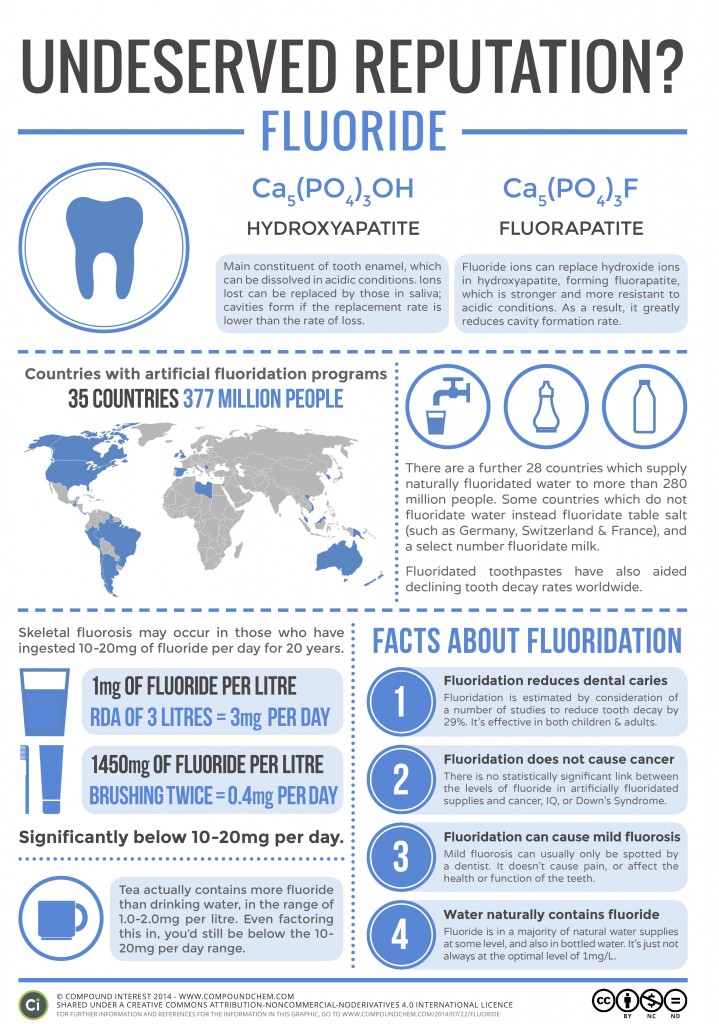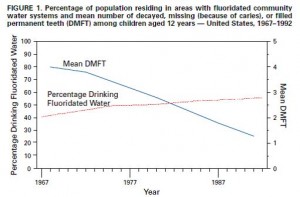Fluoride in our water. Fluoride in our toothpaste. Why do we need it?

Our children are so precious to us.
We’d do anything to protect them, and understandably, we don’t want to expose them to anything nasty. So, let’s find out what is good for our dental health, what’s bad – and what’s plain hype. Especially with fluoride.
For the past few years, fluoride has come under scrutiny, giving it a somewhat undeserved reputation. ‘Opinions’ on fluoride are everywhere, which is not helped by access to the Internet. Let’s have a decent look at this chemical, so we can sift out the good advice from the bad.
Fluoride is used in three ways to protect our teeth: it is added to our toothpaste, is a treatment at the dentist, and it is added to the water we drink. Fluoride is a chemical, but remember, not all chemicals are harmful in their present dosage. Put simply, it’s the dose, not the chemical that maketh the poison! And fluoride is far from being poisonous in the way we ingest and use it.
Everything contains chemicals, including organic food. Some foods contain chemicals that are extremely dangerous in high doses, but are totally fine to eat in the doses present. For example, pears, and dried fruit and nuts contain formaldehyde, and apples contain amygdalin, which is a poisonous cyanogenic glycoside. But they are in tiny quantities which are far below the harmful dose.
Once again, let’s be clear: it’s only when dosages are higher than advised that we can run into problems.

Fluoride in drinking water
35 countries throughout the world add fluoride to our drinking water in the interest of dental health. This occurs here in Australia, as well as the USA, Spain, parts of the UK and Ireland and many others. Fluoride does occur naturally in some water supplies but often it’s at a lower concentration than what is recommended for your dental health. But despite this fluoridation program, which has clearly aided the rates of declining tooth decay, people are still concerned.
source: CDC
Fluoride is added to reinforce the chemical structures of your teeth. The essential enamel on your teeth is comprised mainly of a compound known as hydroxyapatite. This consists of calcium, phosphate and hydroxide ions and is also a major component of your bones. Now, your enamel is pretty tough, but because of a lot of the acidic stuff we eat, the surface can be broken down. Fortunately, our bodies can naturally replace these lost ions with a process known as re-mineralisation. But sometimes, this process doesn’t happen fast enough. The result? The pores in our teeth sometimes become enlarged, inviting tooth decay and cavities.
How can we protect our teeth? Enter: fluoride.
Fluoride is the most cost-effective and practical way to provide protection from tooth decay.
By adding fluoride to our teeth, we can massively protect our tooth enamel from all that acidity in our mouths and greatly protect our teeth from tooth decay and cavities. The World Health Organisation suggests adding just 1 mg of fluoride per 1 L of water, with studies suggesting that this small amount can reduce tooth decay by up to 29%.
The bad reviews
For a while, there were reviews circulating the world that gave fluoride a bad rap. Concerns involved a reduction in IQ, connections with Downs Syndrome, thyroid disorders, neurotoxicity and even cancer. But – and here’s the but – these studies were poorly carried out and misinterpreted. However, they were still picked up by the media. You can read a more recent study confirming no connection between fluoride exposure and IQ or neurotoxicity over a 38 year period while consuming normal levels of fluoride consumption here.
Negatives about fluoride (that shouldn’t concern most of us)
Any scientist will tell you that fluoride is not completely benign. In certain strengths it can be quite toxic. But not in the dosage added to our drinking water in Australia. Still, there are some problems that may arise.
For example, dental fluorosis is a purely aesthetic concern that can be spotted by tiny dots or lines on the teeth has absolutely no harm to the teeth. It affects approximately one in 22 people. Often, this harmless condition is caused by children using adult formula fluoride toothpaste and swallowing them. This is one of the reasons why dentists suggest that children use a kids’ formula toothpaste instead.
So what about skeletal fluorosis? Yes, this is a real condition where the calcium can be leaked out of your bones after ingesting excessive amounts of fluoride. Fortunately, this is pretty difficult to do in Australia, even if you drank water all day long, brushed your teeth twice a day with fluoride toothpaste and drank copious amounts of tea (which contains additional fluoride), you’d still be way below the threshold. Interestingly, this condition usually only presents itself in the rare parts of the world where fluoride is NATURALLY present in drinking water in large amounts.
Again, in Australia our drinking water contains only a small amount of fluoride, as recommended by the World Health Organisation – to improve your health. It is not added in dangerous amounts.
Fluoride Toothpaste
Fluoride is also added to our toothpaste because it is so good at protecting our teeth. Toothpaste is not intended to be swallowed, though. Fluoride toothpaste gives added protection against tooth decay and cavities, despite benefiting from drinking water with added fluoride. It’s a sensible measure to take to maintain good dental health.
“Natural” toothpaste sound lovely. Again, it’s understandable that people would want to choose natural products when we can because we think to ourselves, “Why expose ourselves to unnecessary chemicals when we don’t have too?”
This is an understandable train of thought, but for the sake of your (and your children’s) dental health it might be a good idea to examine these thoughts.
A few concerns surrounding natural toothpaste:
- They contain no fluoride
- They contain ingredients that sound harmless, but may be a nightmare for your teeth, such as bicarbonate of soda or sea salt. Now, these are wicked ingredients when you want to remove tea stains from your teacup – pure magic! But they are highly abrasive to the enamel on your teeth.
- We’re now all living for a long time. If you use harsh abrasives on your teeth, they may not be in your mouth if you live to 87.
In-chair fluoride treatments & remineralisation
Dentists will also recommend (mostly) that you also have a six monthly fluoride treatment, also known as remineralisation when you come in for your six-monthly scale and clean. This is to further protect your tooth enamel from acidity and potential tooth decay.
Proof that dentists care about your dental health!
At the end of the day, the fact that dentists promote the use of fluoride says something about their integrity. After all, why would they promote something that reduces the need for many of us to visit them?!

Image courtesy of Compound Interest: http://tiny.cc/v12q1x
References:
Fluoride & water fluoridation – an undeserved reputation? (2014, 22nd July) http://www.compoundchem.com/2014/07/22/fluoride/
Water fluoridation benefits and risks – a systematic review (22/7/2015) http://www.skepticalraptor.com/skepticalraptorblog.php/tag/fluoride/
Fluoride & thyroid disorders (2015, 9th April) http://www.hif.com.au/healthy-lifestyle-blog/dental-health/09042015/fluoride-and-thyroid-disorders.aspx



